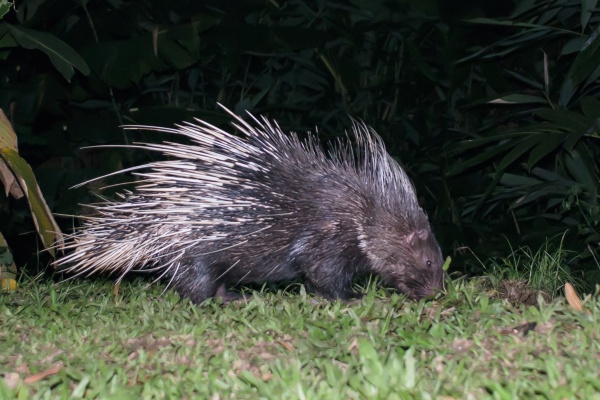Facts About Malayan (Common) Porcupine
The Malayan porcupine, also known as the Himalayan porcupine, is a rodent from the Hystricidae family. This intriguing species, comprising three subspecies, inhabits both South and Southeast Asia. Their range extends to countries such as Nepal, India, China, Myanmar, Thailand, Laos, Cambodia, Vietnam, Malaysia, Singapore, Indonesia, and Borneo. Researchers suggest that these porcupines originated in southern Asia, potentially sharing a common ancestor from the Late Pleistocene era when some landmasses were still interconnected.
These porcupines are terrestrial dwellers, generally found in small groups within forests and adjacent open areas. They construct their homes by creating dens near rocky spots, among tree roots, or in burrows. Malayan porcupines can inhabit forested areas up to 1,500 meters above sea level. Female Malayan porcupines have a gestation period of approximately 110 days, typically birthing two or three offspring at a time, with the possibility of up to two litters annually.
Malayan porcupines are easily identified by their sharp quills, which are modified hairs. They have a robust body, short legs covered in brown hair, and distinctive black and white or yellow-striped quills. These porcupines usually weigh between 0.7 to 2.4 kg. Their diet includes roots, tubers, bark, fruits, carrion, insects, and large seeds.
As nocturnal creatures, Malayan porcupines forage for food at night and rest during the day. They are often observed alone or in pairs. Their gestation period ranges from 90 to 112 days, and they can live up to 27 years. The International Union for Conservation of Nature (IUCN) classifies them as Least Concern. Their quills are sometimes used for decoration, and they are also hunted for their meat.

 Afghanistan
Afghanistan